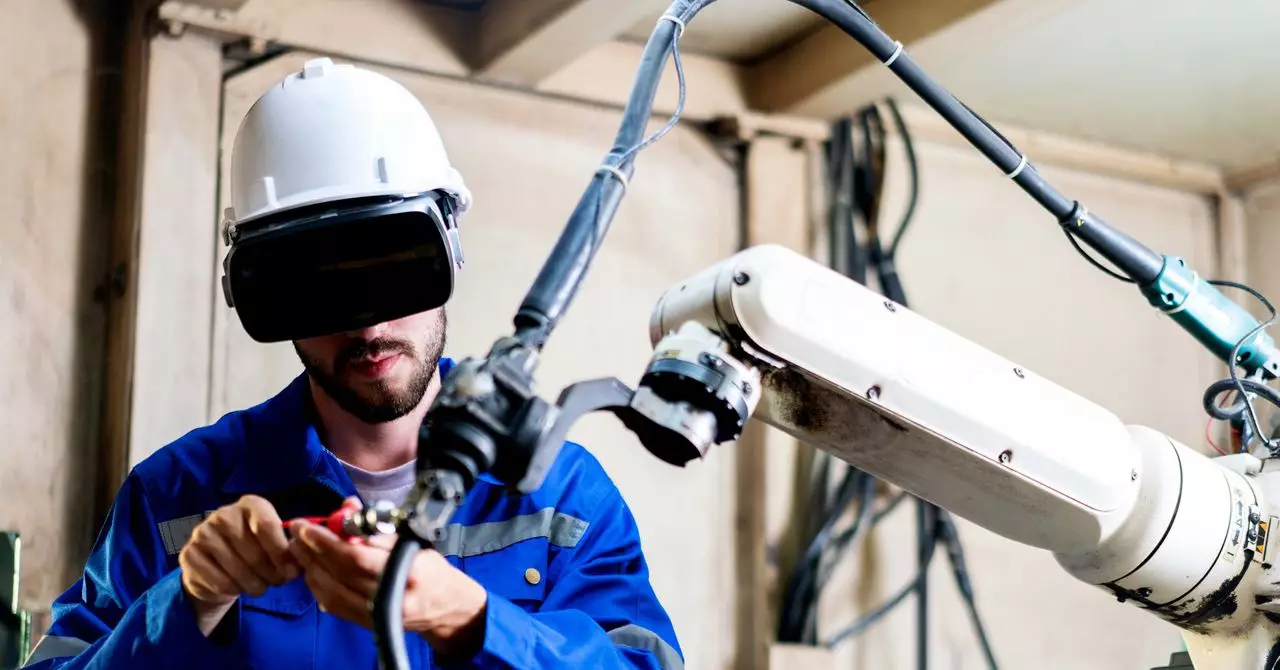The landscape of manufacturing is undergoing a profound transformation, largely driven by technological advancements that have unlocked new dimensions of efficiency and creativity. The conventional approach of prototyping and testing production lines through physical trials is rapidly becoming obsolete. Now, companies like BMW are harnessing the power of the industrial metaverse to simulate their production processes in virtual spaces. This not only streamlines operations but also allows manufacturers to uncover potential issues long before the assembly line even begins.
Imagine a time when engineers had to travel to various factory floors, manually checking if a chassis could navigate through the production process, risking time and resources on trial and error. Now, instead of relying on such cumbersome methods, teams can visualize their entire production system within a digital realm, where a 3D model of their vehicle is run through a replica of the factory. This transition epitomizes the evolution towards the industrial metaverse, a concept that has proven to deliver remarkable returns on investment.
Defining the Industrial Metaverse
While the consumer-centric metaverse has often focused on social interactions and entertainment—try to forget Zuckerberg’s vision of virtual poker nights—the industrial spin offers a more compelling and utilitarian approach. Valued at an anticipated $100 billion by 2030, according to projections from the World Economic Forum, the industrial metaverse encompasses a robust blend of cutting-edge technologies that facilitate simulations, augmented reality, and immersive 3D experiences.
Varvn Aryacetas of Deloitte aptly terms it “spatial computing,” emphasizing its function as a bridge connecting tangible reality with digital innovation. This convergence opens up a spectrum of applications, from virtual reality training to the digital crafting of products, thereby reshaping the contours of traditional manufacturing techniques.
Nvidia: The Catalyst for Change
One of the most significant players in this arena is Nvidia, a company long recognized for its prowess in graphics processing units (GPUs) but now expanding its horizons towards artificial intelligence and digital twins. Their introduction of the Omniverse platform marks a pivotal moment in the industrial metaverse, providing the necessary tools to simulate, automate, and innovate across various manufacturing environments.
Rev Lebaredian, an executive at Nvidia, emphasizes the versatility of this technology. The ability to recreate the physical world within a digital framework is not merely advantageous; it is essential for developing autonomous systems. Companies are leveraging this platform extensively, with Lowe’s experimenting with new store layouts, Zaha Hadid Architects utilizing virtual models for design collaboration, and Amazon training robots virtually before they interact with the physical world.
Case Study: BMW’s Innovative Journey
Take a closer look at BMW, a manufacturer that integrates these technological advancements seamlessly into its operations. By creating virtual surrogates of their factories, including their latest development in Debrecen, Hungary, BMW has been able to proactively address potential production bottlenecks. They populate these virtual environments with detailed 3D representations of cars, machinery, and even human operators, forming an intricate simulation that mirrors real-world processes.
Matthias Mayr, a specialist at BMW, reveals the complexity of these virtual factories. Using open-source formats like Universal Scene Description (OpenUSD) allows for a level of detail in modeling that has traditionally been the domain of gaming technologies. The sophisticated navigation and user interface ensure that stakeholders can explore these digital twins intuitively, similar to navigating Google Street View—transforming the experience into an accessible exploration rather than a technical challenge.
A Future of Endless Possibilities
This burgeoning industrial metaverse is not just about improving efficiencies but also represents a profound cultural shift within the manufacturing sector. Organizations are more equipped than ever to engage in collaborative, cross-functional projects that mitigate risk and optimize performance. As industries continue to explore the limitless potential of digital reverberation in the manufacturing process, the emphasis will surely shift from mere output to holistic innovation and sustainability.
Ultimately, the industrial metaverse signifies a brighter future where creativity, precision, and agility thrive. The integration of virtual reality, simulation, and spatial computing isn’t just an evolving trend; it’s becoming an essential cornerstone for manufacturing firms eager to maintain a competitive edge in an increasingly complex global market.


Leave a Reply